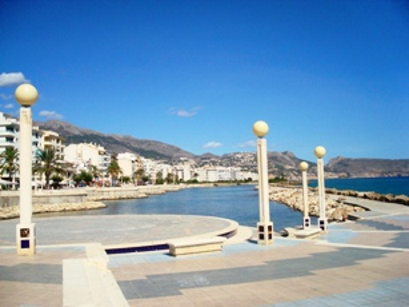Sights & Attractions

Altea is famous for the landmark church of Nuestra Senora del Consuelo or Virgen de Consuelo with its beautiful blue and white tiled dome roof- one of the most photographed landmarks of the area. This church is situated at the top of a hill and can be seen for miles around. The N332 splits the town in half. On one side are the sandy and pebbled backed by the long promenade and the marina. On the other side of the road are the old and new town. The tram station and busy Tuesday morning market are both to be found in the new town. The old town part of Altea is set on a steep hillside and is a popular haunt of artists. In the narrow streets with their scenic white houses, orange trees and geraniums, one can find painters, potters and many other traditional craftsmen’s studios. Many of the streets are stepped and wind up to the church and plaza at the top of the hill, from where one can enjoy magnificent views of the mountains and the sea. These pedestrianized cobble streets are packed with top class restaurants and a fascinating array of tiny shops offering exquisite local crafts, paintings and gifts. There is a real authentic Spanish feel to Altea town- often missing from others on the coast.
Seafront Promenade in Altea.Along Altea’s yacht harbor can be found the beaches of Pueblo Macarat. Unusually for the Costa Blanca this is not your typical sandy beach but a predominantly pebble beach. Despite this, Altea offers so much ambience that it just doesn’t matter, this is definitely a place worthy of visiting.
Places of interest and ideas of things to do in Altea
- Old Town: steep cobbled streets packed with character, restaurants and shops.
- Market: large Tuesday morning.
- Church: Nuestra Senora del Consuelo famous for its blue and white tiled dome.
- Beaches: sandy and shingle beaches.
- Promenade: long beach front with great selection of bars and restaurants.
- Marina: at southern end of town.
- Tram Station: for transport south to Benidorm and Alicante or north to Denia.




